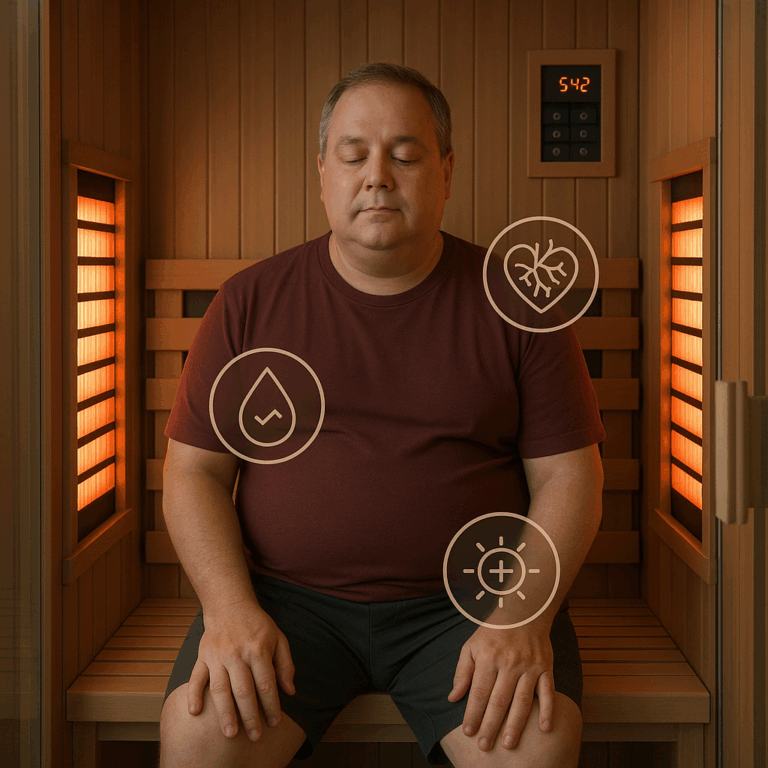
Inflammation and chronic pain are widespread health concerns affecting millions globally. While medications provide temporary relief, sauna therapy offers a natural, non-invasive approach to managing inflammation and pain. This article explores the scientific mechanisms behind how sauna sessions can reduce inflammation, alleviate pain, and promote long-term healing.
The Science Behind Heat Therapy and Inflammation Reduction
How Heat Exposure Modulates the Immune System
Sauna therapy influences the body’s immune response by triggering heat shock proteins (HSPs) and anti-inflammatory cytokines, which help reduce chronic inflammation. Key effects include:
- Reduction in Pro-Inflammatory Markers: Studies show that regular sauna use decreases C-reactive protein (CRP) and interleukin-6 (IL-6), both linked to inflammation.
- Heat Shock Protein Activation: HSPs support cellular repair, reducing oxidative stress and inflammation.
- Immune System Regulation: Sauna therapy promotes an adaptive immune response, reducing excessive inflammation.
Improved Circulation and Oxygen Delivery
Heat exposure causes vasodilation, increasing blood flow and oxygenation of tissues, which:
- Flushes out inflammatory waste products.
- Delivers nutrients essential for tissue repair.
- Reduces stiffness and enhances muscle recovery.
Sauna Therapy for Pain Management
Relief for Chronic Pain Conditions
Sauna use has been studied for its effectiveness in reducing pain associated with:
- Arthritis and Joint Pain: Infrared saunas have been shown to reduce stiffness and pain in patients with rheumatoid arthritis and osteoarthritis.
- Fibromyalgia: Clinical studies indicate that sauna therapy reduces pain sensitivity and fatigue in fibromyalgia patients.
- Lower Back Pain: Heat therapy alleviates chronic lower back pain by relaxing muscles and reducing nerve compression.
Endorphin Release and Pain Perception
Heat exposure stimulates the release of endorphins, the body’s natural painkillers, which:
- Enhance mood and reduce pain perception.
- Reduce dependency on pain medications.
- Support mental well-being alongside physical relief.
Detoxification and Inflammation Reduction
Heavy Metal and Toxin Removal
Toxic buildup contributes to inflammation and chronic pain. Sauna-induced sweating aids in the excretion of:
- Heavy metals (lead, mercury, cadmium, arsenic).
- Environmental toxins like BPA and phthalates.
- Metabolic waste products, reducing the inflammatory burden on the body.
Liver and Kidney Support
By reducing toxic load, sauna therapy relieves stress on the liver and kidneys, promoting overall detoxification efficiency.
Sauna Therapy for Muscle Recovery and Injury Healing
Accelerated Muscle Repair
Post-exercise sauna sessions aid in:
- Reducing muscle soreness (DOMS).
- Enhancing blood flow for faster nutrient delivery.
- Decreasing lactic acid accumulation.
Faster Healing of Soft Tissue Injuries
Sauna heat stimulates collagen production and tissue repair, benefiting those recovering from:
- Sprains and strains.
- Tendonitis and ligament injuries.
- Post-surgical inflammation.
Traditional vs. Infrared Saunas for Inflammation and Pain
Traditional (Finnish) Saunas
- Heat Source: Wood, gas, or electric heater.
- Temperature: 70-100°C (158-212°F).
- Humidity: 5-30%.
- Best for: Circulation improvement and deep sweating.
Infrared Saunas
- Heat Source: Infrared light (near, mid, far-infrared waves).
- Temperature: 45-65°C (113-149°F).
- Humidity: Low.
- Best for: Deeper tissue penetration, cellular repair, and detoxification.
Who Can Benefit from Sauna Therapy for Inflammation and Pain?
- Athletes: Enhances recovery and reduces post-training soreness.
- Individuals with Chronic Pain: Effective for arthritis, fibromyalgia, and neuropathy.
- People with Autoimmune Disorders: May help regulate immune overactivity.
- Those with Sedentary Lifestyles: Counteracts inflammation from prolonged sitting.
Conclusion
Scientific evidence strongly supports sauna therapy as an effective method for reducing inflammation and pain naturally. Through improved circulation, detoxification, immune modulation, and muscle recovery, saunas provide a holistic, non-invasive approach to pain management. Integrating sauna sessions into a wellness routine can enhance long-term health and reduce reliance on medication.



